PHOENIX CONTACT - POWER 2903155
Specifications
Manufacturer
Phoenix Contact - Power
Manufacturers Part #
2903155
Industry Aliases
TRIO-PS-2G/3AC/24DC/20
Series
TRIO-PS-2G
Factory Pack Quantity
1
Dimensions
6.30 x 2.56 x 5.12"
Efficiency
93%
Industry
OEM/Commercial
Input Voltage Nominal
400 VAC to 500 VAC
IP Rating
IP20
Isolation
4000 VAC
Mechanical Style
DIN Rail Mount
Mounting
DIN Rail Mount
Number of Outputs
1
Operating Temperature
- 25 to + 70°C (ambient)
Output Amps 1
20 A
Output Voltage V1 Nominal
24 VDC
Power
480 W
Subcategory
AC-DC Power Supply
Datasheet
Extracted Text
TRIO-PS-2G/3AC/24DC/20 Power supply unit Data sheet 105906_en_00 © PHOENIX CONTACT 2015-08-31 1Description TRIO POWER - power supplies with standard functionality The power supplies of the TRIO POWER family convince Technical data (short form) due to their slim and robust design. The dynamic boost (1.5 Nominal input voltage range 3x 400 V AC ... 500 V AC x I for 5 seconds) absorbs starting currents and short over- 2x 400 V AC ... 500 V AC N load situations securely during operation and without a drop Frequency range 50 Hz ... 60 Hz in output voltage. The push-in connection technology on the Nominal output voltage 24 V DC ±1 % > 24 V DC, constant capacity re- 24 V DC ... 28 V DC front enables fast and tool-free wiring of the devices. stricted Nominal output current I / I 20 A / 30 A (5 s) Features N Dyn Residual ripple ≤ 20 mV PP – Especially slim design Protection against surge voltage on ≤ 30 V DC – Worldwide use, thanks to wide-range input the output – Safe operation, thanks to electrically and mechanically MTBF (IEC 61709, SN 29500) > 1800000 h (25 °C) > 1100000 h (40°C) robust design > 510000 h (60°C) – Reliable starting of heavy loads, thanks to dynamic Efficiency > 93 % boost (1.5 x I for 5 seconds) at 400 V AC and nominal values N – Simplified error diagnostics for remote signaling via DC- Maximum power dissipation NO- < 1.2 W Load OK signal contact Power loss nominal load max. < 38 W – OVP (Over Voltage Protection) limits surge voltages to Ambient temperature (operation) -25 °C ... 70 °C ≤ 30 V (EN61131-2) > 60 °C Derating: 2,5 %/K – Tool-free connection via push-in connection technolo- Ambient temperature (start-up type -40 °C gy tested) Weight 1.5 kg Dimensions W/H/D 65 mm / 130 mm / 160 mm Make sure you always use the latest documentation. It can be downloaded from the product at phoenixcontact.net/products. TRIO-PS-2G/3AC/24DC/20 2Table of contents 1 Description .............................................................................................................................. 1 2 Table of contents ..................................................................................................................... 2 3 Ordering data .......................................................................................................................... 3 4 Technical data ......................................................................................................................... 3 5 Safety regulations and installation notes.................................................................................. 7 6 Basic circuit diagram ............................................................................................................... 7 7 Structure.................................................................................................................................. 8 8 Cooling .................................................................................................................................... 8 9 Mounting position and dimensions .......................................................................................... 9 9.1 Mounting position ................................................................................................................ 9 9.2 Device dimensions............................................................................................................. 10 10 Mounting/removal.................................................................................................................. 11 10.1 Assembly......................................................................................................................... 11 10.2 Removal.......................................................................................................................... 11 11 Device connection terminal blocks ........................................................................................ 11 11.1 Push-in connection technology ............................................................................................. 11 12 Input ...................................................................................................................................... 12 12.1 Position of input terminals .................................................................................................... 12 12.2 Protection of the primary side ............................................................................................... 12 13 Output.................................................................................................................................... 13 13.1 Position of output terminals .................................................................................................. 13 13.2 Protection of the secondary side............................................................................................ 13 13.3 Output characteristic curve................................................................................................... 13 14 Dynamic boost....................................................................................................................... 14 15 Signaling................................................................................................................................ 14 15.1 DC OK-LED ..................................................................................................................... 14 15.2 Floating signal contact ........................................................................................................ 14 16 Derating................................................................................................................................. 15 16.1 Temperature-dependent derating .......................................................................................... 15 16.2 Position-dependent derating................................................................................................. 16 17 Operating modes................................................................................................................... 19 17.1 Series operation ................................................................................................................ 19 17.2 Parallel operation............................................................................................................... 19 17.3 Redundant operation .......................................................................................................... 19 17.4 Decoupling with diode module .............................................................................................. 19 17.5 Increasing power ............................................................................................................... 20 105906_en_00 PHOENIX CONTACT 2 TRIO-PS-2G/3AC/24DC/20 3Ordering data Description Type Order No. Pcs./Pkt. Primary-switched TRIO POWER power supply with push-in connection for TRIO-PS-2G/3AC/24DC/20 2903155 1 DIN rail mounting, input: 3-phase, output: 24 V DC/20 A Accessories Type Order No. Pcs./Pkt. Multi-channel, electronic device circuit breaker with active current limita- CBM E4 24DC/0.5-10A NO-R 2905743 1 tion for protecting four loads at 24 V DC in the event of overload and short circuit. With nominal current assistant and electronic locking of the set nominal currents. For installation on DIN rails. Multi-channel, electronic device circuit breaker with active current limita- CBM E8 24DC/0.5-10A NO-R 2905744 1 tion for protecting eight loads at 24 V DC in the event of overload and short circuit. With nominal current assistant and electronic locking of the set nominal currents. For installation on DIN rails. VARIOFACE module, with two equipotential busbars (P1, P2) for potential VIP-2/SC/PDM-2/24 2315269 1 distribution, for mounting on NS 35 rails. Module width: 70.4 mm VARIOFACE module with push-in connection and two equipotential bus- VIP-3/PT/PDM-2/24 2903798 1 bars (P1, P2) for potential distribution, for mounting on NS 35 rails. Module width: 57.1 mm Our range of accessories is being continually extended, our current range can be found in the download area. 4 Technical data Input data Nominal input voltage range 3x 400 V AC ... 500 V AC -20 % ... +15 % 2x 400 V AC ... 500 V AC -10 % ... +15 % Input voltage range 3x 320 V AC ... 575 V AC 2x 360 V AC ... 575 V AC Current consumption (for nominal values) 3x 1.2 A (400 V AC) 3x 1 A (500 V AC) 2x 2.3 A (400 V AC) 2x 1.9 A (500 V AC) Frequency 50 Hz ... 60 Hz Inrush current limitation (at 25°C) ≤ 22 A (typical) 2 2 Inrush surge current I t 0.5 A s Input fuse internal (device protection), slow-blow 3.15 A Mains buffering > 10 ms (400 V AC) > 20 ms (500 V AC) A choice of suitable fuses 6 A ... 16 A (Characteristics B, C, D, K) Input connection data Connection method Push-in connection Conductor cross section, solid 0.2 mm² ... 4 mm² Conductor cross section, flexible 0.2 mm² ... 2.5 mm² Cross section AWG 24 ... 12 Stripping length 10 mm 105906_en_00 PHOENIX CONTACT 3 TRIO-PS-2G/3AC/24DC/20 Output data Nominal output voltage 24 V DC ±1 % Setting range of the output voltage 24 V DC ... 28 V DC (> 24 V DC, constant capacity restricted) Output current 20 A 30 A (5 s) Control deviation < 1 % (change in load, static 10 % ... 90 %) < 3 % (Dynamic load change 10 % ... 90 %, 10 Hz) < 0.1 % (change in input voltage ±10 %) Efficiency > 93 % (at 400 V AC and nominal values) Rise time ≤ 120 ms (U (10 % ... 90 %)) OUT Residual ripple ≤ 20 mV PP Connection in parallel Yes, for redundancy and increased capacity Connection in series Yes Protection against surge voltage on the output ≤ 30 V DC Output connection data Connection method Push-in connection Conductor cross section, solid 0.2 mm² ... 10 mm² Conductor cross section, flexible 0.2 mm² ... 6 mm² Conductor cross section AWG 24 ... 8 Stripping length 15 mm Signaling DC OK Types of signaling LED, floating signal contact Signal threshold U < 0.9 x U OUT N Type of signaling LED Status indicator green Type of signaling Switch contact Maximum switching voltage 30 V AC/DC Continuous load current 100 mA Signal connection data Connection method Push-in connection Conductor cross section, solid 0.2 mm² ... 1.5 mm² Conductor cross section, flexible 0.2 mm² ... 1.5 mm² Conductor cross section AWG 24 ... 16 Stripping length 8 mm General data Insulation voltage input/output 4 kV AC (type test) 1.5 kV AC (routine test) Degree of protection IP20 Protection class I (in closed control cabinet) Inflammability class in acc. with UL 94 (housing) V0 MTBF (IEC 61709, SN 29500) > 1800000 h (25 °C) > 1100000 h (40°C) > 510000 h (60°C) Type of housing Aluminum (AlMg3) Hood version Polycarbonate Dimensions W / H / D (state of delivery) 65 mm / 130 mm / 160 mm Weight 1.5 kg 105906_en_00 PHOENIX CONTACT 4 TRIO-PS-2G/3AC/24DC/20 Power consumption Maximum power dissipation NO-Load < 1.2 W Power loss nominal load max. < 38 W Ambient conditions Ambient temperature (operation) -25 °C ... 70 °C (> 60 °C Derating: 2,5 %/K) Ambient temperature (start-up type tested) -40 °C Ambient temperature (storage/transport) -40 °C ... 85 °C Max. permissible relative humidity (operation) ≤ 95 % (at 25 °C, non-condensing) Maximum altitude ≤ 5000 m (> 4000 m, observe derating) Vibration (operation) < 15 Hz, amplitude ±2.5 mm (according to IEC 60068-2-6) 15 Hz ... 150 Hz, 4g, 90 min. Shock 30g in each direction, according to IEC 60068-2-27 Pollution degree 2 Climatic class 3K3 (in acc. with EN 60721) Standards Electrical Equipment for Machinery EN 60204-1 Electrical safety (of information technology equipment) IEC 60950-1/VDE 0805 (SELV) Electronic equipment for use in electrical power installations EN 50178/VDE 0160 (PELV) SELV IEC 60950-1 (SELV) and EN 60204-1 (PELV) Safe isolation DIN VDE 0100-410 Limitation of mains harmonic currents EN 61000-3-2 Network version/undervoltage Semi F47-0706 Rail applications EN 50121-4 Approvals UL UL Listed UL 508 UL/C-UL Recognized UL 60950-1 Shipbuilding GL applied for Current approvals/permissions for the product can be found in the download area under phoenixcontact.net/products. 105906_en_00 PHOENIX CONTACT 5 TRIO-PS-2G/3AC/24DC/20 Conformance with EMC Directive 2004/108/EC Noise immunity according to EN 61000-6-2 EN 61000-6-2 requirement Tested Electrostatic discharge EN 61000-4-2 Housing contact discharge 4 kV (Test intensity 2) 6 kV (Test intensity 4) Housing air discharge 8 kV (Test intensity 3) 8 kV (Test intensity 4) Comments Criterion B Criterion A Electromagnetic HF field EN 61000-4-3 Frequency range 80 MHz ... 1 GHz 80 MHz ... 1 GHz Test field strength 10 V/m (Test intensity 3) 10 V/m (Test intensity 3) Frequency range 1.4 GHz ... 2 GHz 1 GHz ... 2 GHz Test field strength 3 V/m (Test intensity 2) 10 V/m (Test intensity 3) Frequency range 2 GHz ... 2.7 GHz 2 GHz ... 3 GHz Test field strength 1 V/m (Test intensity 1) 10 V/m (Test intensity 3) Comments Criterion A Criterion A Fast transients (burst) EN 61000-4-4 Input 2 kV (Test intensity 3 - asymmetrical) 4 kV (Test intensity 4 - asymmetrical) Output 2 kV (Test intensity 3 - asymmetrical) 2 kV (Test intensity 3 - asymmetrical) Signal 1 kV (Test intensity 2 - asymmetrical) 1 kV (Test intensity 2 - asymmetrical) Comments Criterion B Criterion A Surge current loads (surge) EN 61000-4-5 Input 1 kV (Test intensity 1 - symmetrical) 3 kV (Test intensity 3 - symmetrical) 2 kV (Test intensity 1 - asymmetrical) 6 kV (Test intensity 4 - asymmetrical) Output 0.5 kV (Test intensity 1 - symmetrical) 1 kV (Test intensity 2 - symmetrical) 0.5 kV (Test intensity 1 - asymmetrical) 2 kV (Test intensity 1 - asymmetrical) Signal 1 kV (Test intensity 2 - asymmetrical) 1 kV (Test intensity 1 - symmetrical) Comments Criterion B Criterion B Conducted interference EN 61000-4-6 Input/output asymmetrical asymmetrical Frequency range 0.15 MHz ... 80 MHz 0.15 MHz ... 80 MHz Voltage 10 V (Test intensity 3) 10 V (Test intensity 3) Comments Criterion A Criterion A Key Criterion A Normal operating behavior within the specified limits. Criterion B Temporary impairment to operational behavior that is corrected by the device it- self. Emitted interference in acc. with EN 61000-6-3 Radio interference voltage in acc. with EN 55011 EN 55011 (EN 55022) Class B, area of application: Industry and residential Emitted radio interference in acc. with EN 55011 EN 55011 (EN 55022) Class B, area of application: Industry and residential All technical specifications are nominal and refer to a room temperature of 25 °C and 70% relative humidity at 2000 m above sea level. 105906_en_00 PHOENIX CONTACT 6 TRIO-PS-2G/3AC/24DC/20 5 Safety regulations and installation 6 Basic circuit diagram notes L1 + Before startup please ensure: L2 + – Installation and startup may only be car- L3 - ried out by qualified personnel. - - – The relevant country-specific regulations must be observed. 13 14 NOTE: Danger if used improperly Figure 1 Basic circuit diagram – The device is a built-in device. – The IP20 degree of protection Key: (IEC 60529/EN 60529) of the device is in- Rectification tended for use in a clean and dry environ- ment. Do not subject the device to any load that exceeds the described limits. Switch – Do not subject the device to mechanical and/or thermal loads that exceed the specified limits. Electrically isolated signal transmission – It is not permissible to open or modify the device. Do not repair the device yourself but replace it with an equivalent device. Regulation Repairs may only be carried out by the manufacturer. The manufacturer is not li- able for damage resulting from violation. Transformer CAUTION: Filter Before startup please ensure: – Connection must be performed by spe- cialist personnel and protection against Floating switching output electric shock ensured. – It must be possible to switch off the de- vice outside the power supply according to the regulations in EN 60950-1 (e.g., by line protection on the primary side). – All feed lines are sufficiently protected and dimensioned! – All output lines are dimensioned accord- ing to the maximum output current of the device or separately protected! – Sufficient convection is guaranteed! EXPLOSION HAZARD! Only remove equipment when it is discon- nected and not in the potentially explosive ar- ea. DANGER Never carry out work on live parts! The housing can become very hot, depending on the ambient temperature and load! 105906_en_00 PHOENIX CONTACT 7 TRIO-PS-2G/3AC/24DC/20 7 Structure 8 Cooling Heat is dissipated from the power supply via the heatsinks integrated into the housing surfaces. Convection to dissi- pate heat from the power supply only takes place in small di- mensions above the housing openings. 5 4 13 14 3 DC OK 24-28V + L1 + L2 - (L3) - 6 - 1 2 Figure 2 Function elements No. Description of the function elements 1. Connection terminal block input voltage: Input L1/L2/L3/ Figure 3 Convection PE 2. Connection terminal block output voltage: Output DC +/- The power supply can be aligned without min- 3. Potentiometer, output voltage: 24 V DC ... 28 V DC imum lateral clearance up to an ambient tem- 4. Signaling DC OK LED perature of 40°C. In a temperature range up to 5. Floating signal contact: max. 30 V AC/DC, 100 mA ≤ 70°C, a lateral minimum clearance of 10 mm 6. Integrated universal snap-on foot between two active components (e.g., power supply) is required. The device can be snapped onto all DIN rails in accordance with EN 60715 and should be mounted in the normal mounting position. To ensure sufficient wiring space to wire the power supply, we recommend a vertical mini- mum clearance from other devices of 50 mm. Depending on the cable duct used, a smaller clearance may be possible. 105906_en_00 PHOENIX CONTACT 8 Input 2/3 AC 400-500V Output DC 24V 20A TRIO POWER TRIO-PS-2G/3AC/24DC/20 9 Mounting position and dimensions 9.1 Mounting position 65 13 14 DC OK 24-28V + L1 + L2 - (L3) - - Figure 4 Locked areas Possible mounting positions: Normal mounting position, installation depth 160 mm (+ DIN rail) 105906_en_00 PHOENIX CONTACT 9 230 115 50 Input 2/3 AC 400-500V Output DC 24V 20A TRIO POWER 130 TRIO-PS-2G/3AC/24DC/20 9.2 Device dimensions 167 65 12 160 9 13 14 DC OK 24-28V + L1 + L2 - (L3) - - 10,5 13,5 Figure 5 Device dimensions 105906_en_00 PHOENIX CONTACT 10 24 10 7,5 Input2/3 AC 400-500V Output DC 24V 20A TRIO POWER 24 7,5 3,5 41 68 78 130 80 45 TRIO-PS-2G/3AC/24DC/20 10 Mounting/removal 11 Device connection terminal blocks 10.1 Assembly 11.1 Push-in connection technology Position the module with the DIN rail guide on the upper All connection terminal blocks on the power supply have edge of the DIN rail, and snap it in with a downward motion. push-in connection technology on the front. The power sup- ply is wired by simply plugging in the connecting cables, no tools are required. For the necessary connection parame- ters for the terminal blocks, please refer to the technical data. A 11.1.1 Plug in connecting cable The wiring is carried out by simply plugging the connecting cable into the contact opening provided. Insert the connect- ing cable as far as it will go. A B Figure 6 Assembly on standard DIN rail Figure 8 Insert connecting cable (push-in connection 10.2 Removal technology) Pull the snap lever open with the aid of a screwdriver and slide the module out at the lower edge of the DIN rail. 11.1.2 Loosen the connecting cable To disconnect the wiring, take a suitable screwdriver and in- sert it into the opening for release. Then carefully pull the D connecting cable out of the contact opening. B C A B Figure 9 Release connecting cable (push-in connection A technology) Figure 7 Removing the DIN rail 105906_en_00 PHOENIX CONTACT 11 TRIO-PS-2G/3AC/24DC/20 12.1 Position of input terminals 12 Input The power supply can be operated on three-phase AC power grids (star grid) in accordance with the nominal input voltage. Connection is via the INPUT L1/L2/L3/PE connec- tion terminal blocks. An all-pos. disconnecting device must be present for opera- tion on three-phase systems. TN-S TN-C L1 L1 L2 L2 L3 L3 L1 N PEN PE L2 + + L1 L1 (L3) - - L2 L2 L3 L3 TT iT L1 L1 L2 L2 L3 L3 N + + L1 L1 - - L2 L2 Figure 11 Position of input terminals L3 L3 12.2 Protection of the primary side Figure 10 Network types Installation of the device must correspond to EN 60950 reg- ulations. It must be possible to disconnect the device from the voltage using a suitable separator outside the power supply. For example, the primary-side line protection is suit- able for this (see technical data). Two internal, approved AC fuses are provided for device protection. Additional device protection is not required. If an internal fuse trips, this is due to a device fault. In this case, the device must be inspect- ed in the factory. Opening the device or re- pairing it yourself is prohibited. L1 L2 L3 PE L1 L2 (L3) Figure 12 Schematic diagram, switching the input termi- nals 105906_en_00 PHOENIX CONTACT 12 Input 2/3 AC 400-500V Output DC 24V 20A Input 2/3 AC 400-500V TRIO-PS-2G/3AC/24DC/20 13 Output A DC voltage for supplying the load is provided at the output + R Load of the power supply. The load is connected via the OUTPUT + +/- connection terminal blocks. - By default, the power supply is pre-set to a nominal output - voltage of 24 V DC. - The output voltage can also be set to the range from 24 V DC to 28 V DC using the potentiometer in order to compensate for a possible voltage drop due to the long cable lengths be- tween the power supply and the load to be supplied. Figure 14 Schematic diagram, switching the output ter- minals 13.1 Position of output terminals 13.3 Output characteristic curve The power supply works with a dynamic power reserve, the dynamic boost, as shown in the U/I characteristic curve in the figure. In the event of a secondary-side short circuit or overload, the output current is limited to 1.5 x I . The mod- N ule does not switch off, but supplies a continuous output cur- rent instead. The secondary voltage is then reduced until the short circuit is eliminated. The U/I characteristic curve with the dynamic power reserve enables high switch-on currents of capacitive loads or inductive loads to be supplied reliably. dyn.Boost 13 t≥5 s 14 U N U < 0,9 x U DC OK N 24-28V I 1,5 x I N N I [A] OUT Figure 15 U/I characteristic curve with dynamic load re- serve Figure 13 Position of output terminals –U = 24 V N 13.2 Protection of the secondary side –I = 20 A N –I = 30 A The power supply is electronically short-circuit-proof and dyn. BOOST idling-proof. In the event of an error, the output voltage is lim- –P = 480 W N ited. It must be ensured that all output cables are dimen- –P = 720 W dyn. BOOST sioned accordingly for the maximum output current or have separate protection. The connecting cables on the secondary side should have large cross sections to keep the voltage drops in the cables as low as possible. 105906_en_00 PHOENIX CONTACT 13 U[V] OUT Output DC 24V 20A TRIO-PS-2G/3AC/24DC/20 14 Dynamic boost 15 Signaling The following example is used to explain how the power 15.1 DC OK-LED supply dynamic boost functions. The DC OK-LED is available for function monitoring. The LED is continuously illuminated when the output voltage is Example: > 90 % of the nominal output voltage U (24 V DC). OUT The power supply supplies a connected base load of 80% until time point t (see illustration, schematic diagram of the 1 dynamic boost behavior). If an additional load is activated while the power supply is in operation, the dynamic boost is requested for the period of time t to t . The power supply 1 2 provides the maximum dynamic power reserve of an addi- tional 70% (ΔP = 1.5 x I x U - P ). dyn. Boost N N Initial load As such, the requested overall total power corresponds to 150% of the nominal power. This power can be accessed di- rectly for at least 5 s in the event that the output voltage re- mains the same. On reaching time point t , the dynamic 2 boost is once more returned to the output value of the base load for thermal offloading of the power supply. In this case, 13 the base load amounts to the same value of 80%, as prior to 14 time point t . If the request to supply the load still exists, 1 DC OK when the time intervals t to t have expired (at least 7 s), a 2 3 new cyclical switching of the dynamic power reserve occurs, 24-28V to a total of 70%. I dyn.Boost 100% Figure 17 Location of the elements 80% 15.2 Floating signal contact A floating diagnostics contact can be used to forward data to ... 5s 7s 5s 7s a higher-level control system. When opened, the diagnos- t t t t t t [s] 1 2 3 4 5 tics contact indicates an underrange of more than 90% for Figure 16 Schematic diagram of dynamic boost behavior the nominal output voltage U . OUT Depending on the connected base load, the max.30 V AC/DC power supply firmware determines the time in- 100 mA PLC tervals for the dynamic boost procedure or the + Digital Input time required for the release of thermal ten- 13 sion. The ratio of dynamic boost time and time 14 DI x for thermal tension release always varies, de- pending on load. DC OK 24-28V Figure 18 Wiring principle 105906_en_00 PHOENIX CONTACT 14 I [A] OUT TRIO P TRIO-PS-2G/3AC/24DC/20 16 Derating 16.1 Temperature-dependent derating The device provides both the I nominal output current and N the I dynamic output current at ambient tempera- dyn. BOOST tures up to +60 °C. For ambient temperatures above +60°C, the ambient power must be decreased by 2.5% per Kelvin increase in temperature. For ambient temperatures above +70°C or in the event of a thermal overload, the de- vice does not switch off. The output power will be decreased by enough to allow device protection. Once the device has cooled down, the output power will be increased again. 1,5 x I N dyn.Boost t≥5 s I N 0 -25 20 40 60 [°C] Figure 19 Temperature derating in normal mounting po- sition 105906_en_00 PHOENIX CONTACT 15 I [A] OUT TRIO-PS-2G/3AC/24DC/20 16.2 Position-dependent derating The power supply can be installed onto all 35 mm DIN rails according to EN 60175. The normal mounting position of the power supply is horizontal. When installing in a different mounting position, derating should be adhered to. The characteristic curve can be used to determine the max- imal output power to be drawn for each ambient temperature for different mounting positions. Normal mounting position Rotated mounting position 90° X-axis 105906_en_00 PHOENIX CONTACT 16 TRIO-PS-2G/3AC/24DC/20 Rotated mounting position 180° X-axis Rotated mounting position 270° X-axis 105906_en_00 PHOENIX CONTACT 17 TRIO-PS-2G/3AC/24DC/20 Rotated mounting position 90° Z-axis Rotated mounting position 270° Z-axis 105906_en_00 PHOENIX CONTACT 18 TRIO-PS-2G/3AC/24DC/20 17 Operating modes + + 17.1 Series operation - - Two power supplies can be switched in series, to double the output voltage. For connection in series, only power sup- I I N N plies of the same performance class should be used. An out- + put voltage of, for example, 48 V DC can be provided, if two 24 V power supplies are connected in series. – Various voltage levels are made possible by varying the switching of the respective output voltage and the measure- ment reference point. Σ=I N +– + + + Figure 21 Schematic diagram in parallel operation - - - +24V 17.3 Redundant operation Redundant circuits are suitable for supplying systems which place particularly high demands on operational reliability. If +48 V -48 V a fault occurs in the primary circuit of the first power supply unit, the second device automatically takes over the com- plete power supply without interruption, and vice versa. For -24V + + + this purpose, the power supply units to be connected in par- - - - allel must be large enough to ensure that the total current re- quirements of all loads can be fully met by one power supply unit. External decoupling diodes or ORING modules are re- Figure 20 Wiring principle, voltage levels with two power quired for 100% redundancy. supplies 17.4 Decoupling with diode module 17.2 Parallel operation Devices of the same type can be connected in parallel to in- crease both redundancy and power. By default upon deliv- + + ery, no further adjustments are required. - - If the output voltage is adjusted, a uniform distribution of power is guaranteed by setting all parallel operated power I I N N supply units to exactly the same output voltage. + To ensure symmetrical current distribution we recommend – that all cable connections from the power supply unit to the busbar are the same length and have the same cross sec- tion. Depending on the system, for parallel connection of more Σ=I than two power supplies a protective circuit should be in- N +– stalled at each individual device output (e.g., decoupling di- ode, DC fuse or circuit breaker). This prevents high return Figure 22 Schematic diagram, decoupling with diode currents in the event of a secondary device fault. module 105906_en_00 PHOENIX CONTACT 19 TRIO-PS-2G/3AC/24DC/20 17.4.1 Decoupling with ORING module + + - - I I N N + – Σ=I N +– Figure 23 Schematic diagram, decoupling with ORING module 17.5 Increasing power The output current can be increased to n x I in the case of N n parallel connected devices. Parallel connection for in- creasing power is used when extending existing systems. A parallel connection is recommended if the power supply unit does not cover the current consumption of the most power- ful load. Otherwise, the load should be distributed between individual devices that are independent from one another. + + - - I I N N + – Σ =2 xI N +– Figure 24 Schematic diagram of increased performance PHOENIX CONTACT GmbH & Co. KG • 32823 Blomberg • Germany 105906_en_00 20 phoenixcontact.com
Frequently asked questions
How does Electronics Finder differ from its competitors?

Is there a warranty for the 2903155?

Which carrier will Electronics Finder use to ship my parts?

Can I buy parts from Electronics Finder if I am outside the USA?

Which payment methods does Electronics Finder accept?

Why buy from GID?

Quality
We are industry veterans who take pride in our work

Protection
Avoid the dangers of risky trading in the gray market

Access
Our network of suppliers is ready and at your disposal

Savings
Maintain legacy systems to prevent costly downtime

Speed
Time is of the essence, and we are respectful of yours



 Manufacturers
Manufacturers
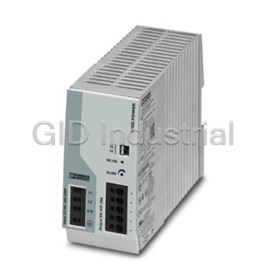

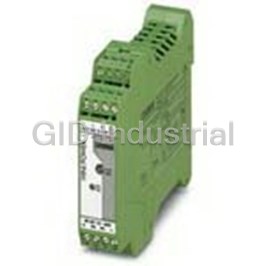
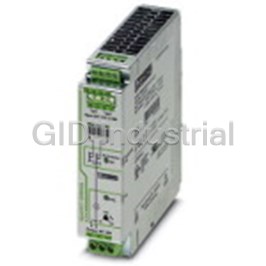
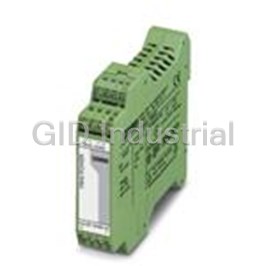
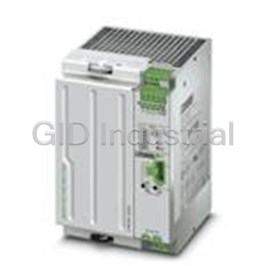
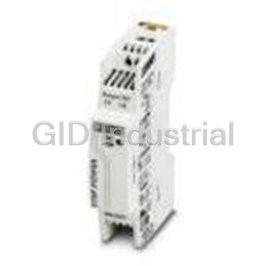
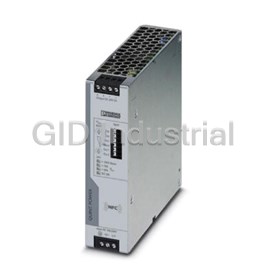




What they say about us
FANTASTIC RESOURCE
One of our top priorities is maintaining our business with precision, and we are constantly looking for affiliates that can help us achieve our goal. With the aid of GID Industrial, our obsolete product management has never been more efficient. They have been a great resource to our company, and have quickly become a go-to supplier on our list!
Bucher Emhart Glass
EXCELLENT SERVICE
With our strict fundamentals and high expectations, we were surprised when we came across GID Industrial and their competitive pricing. When we approached them with our issue, they were incredibly confident in being able to provide us with a seamless solution at the best price for us. GID Industrial quickly understood our needs and provided us with excellent service, as well as fully tested product to ensure what we received would be the right fit for our company.
Fuji
HARD TO FIND A BETTER PROVIDER
Our company provides services to aid in the manufacture of technological products, such as semiconductors and flat panel displays, and often searching for distributors of obsolete product we require can waste time and money. Finding GID Industrial proved to be a great asset to our company, with cost effective solutions and superior knowledge on all of their materials, it’d be hard to find a better provider of obsolete or hard to find products.
Applied Materials
CONSISTENTLY DELIVERS QUALITY SOLUTIONS
Over the years, the equipment used in our company becomes discontinued, but they’re still of great use to us and our customers. Once these products are no longer available through the manufacturer, finding a reliable, quick supplier is a necessity, and luckily for us, GID Industrial has provided the most trustworthy, quality solutions to our obsolete component needs.
Nidec Vamco
TERRIFIC RESOURCE
This company has been a terrific help to us (I work for Trican Well Service) in sourcing the Micron Ram Memory we needed for our Siemens computers. Great service! And great pricing! I know when the product is shipping and when it will arrive, all the way through the ordering process.
Trican Well Service
GO TO SOURCE
When I can't find an obsolete part, I first call GID and they'll come up with my parts every time. Great customer service and follow up as well. Scott emails me from time to time to touch base and see if we're having trouble finding something.....which is often with our 25 yr old equipment.
ConAgra Foods